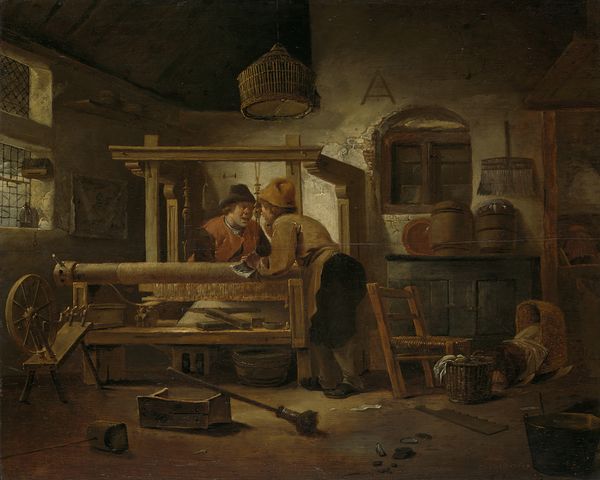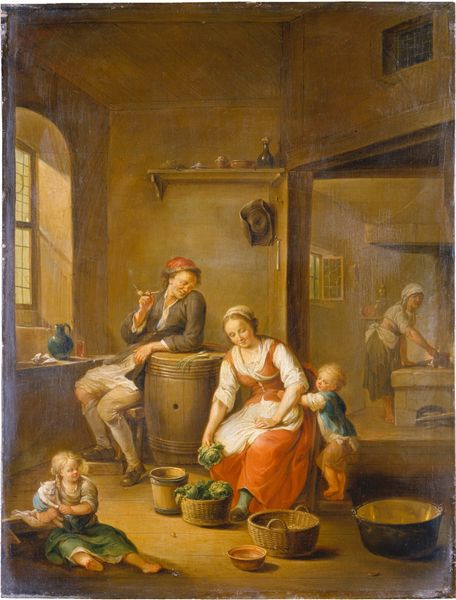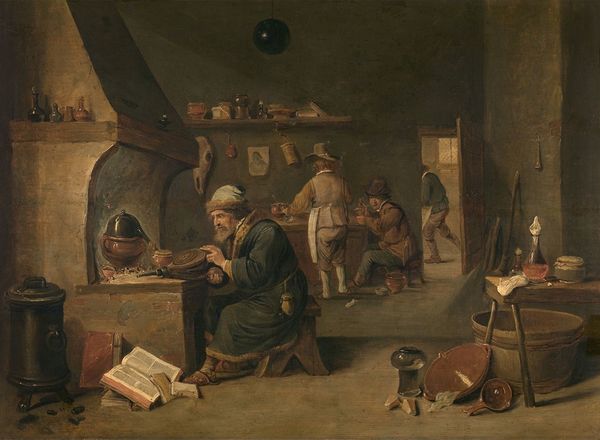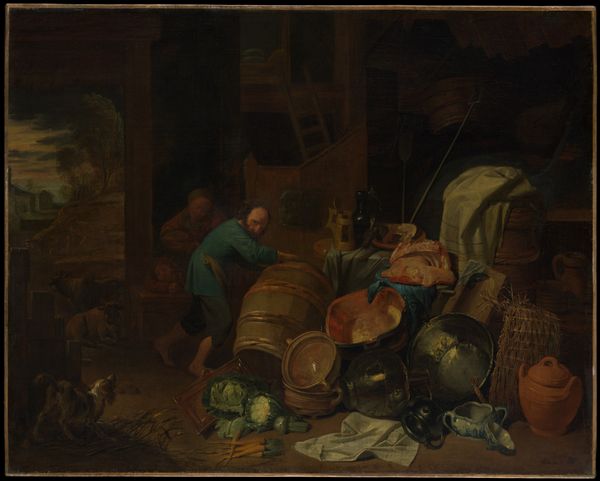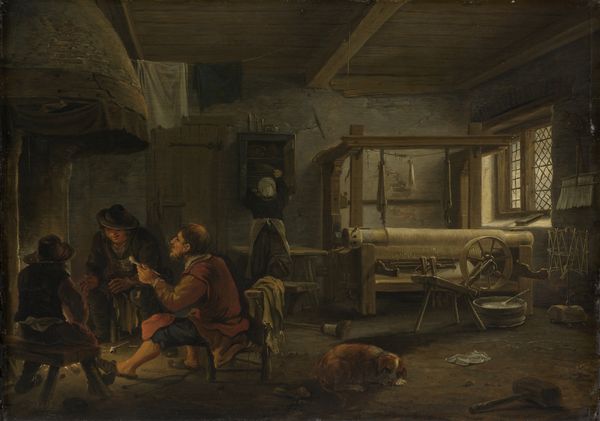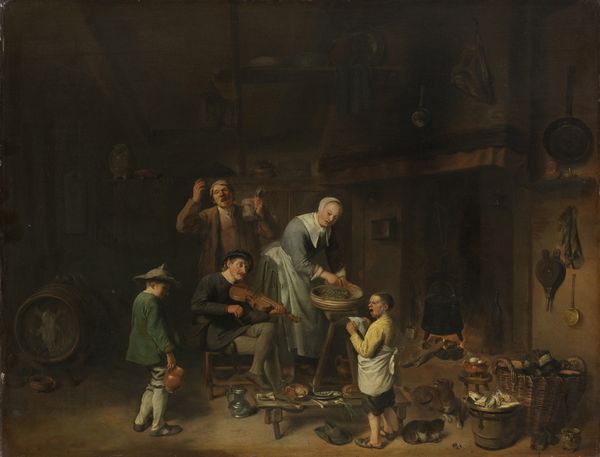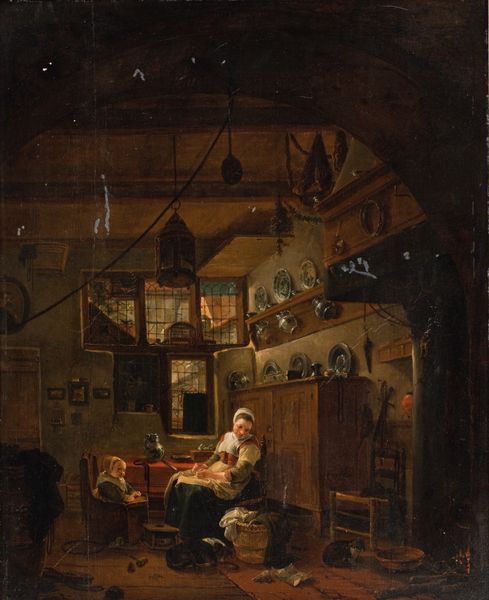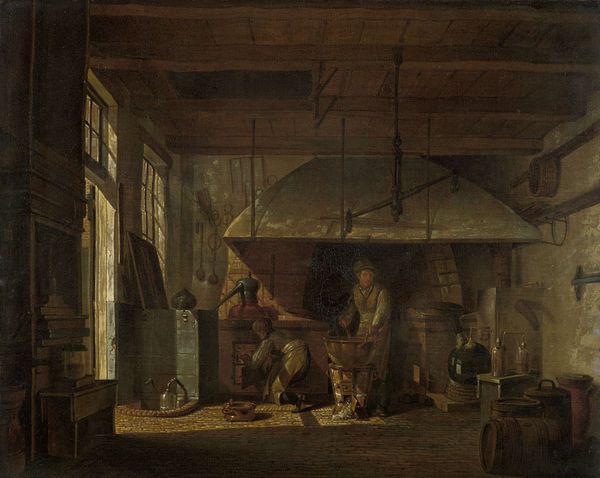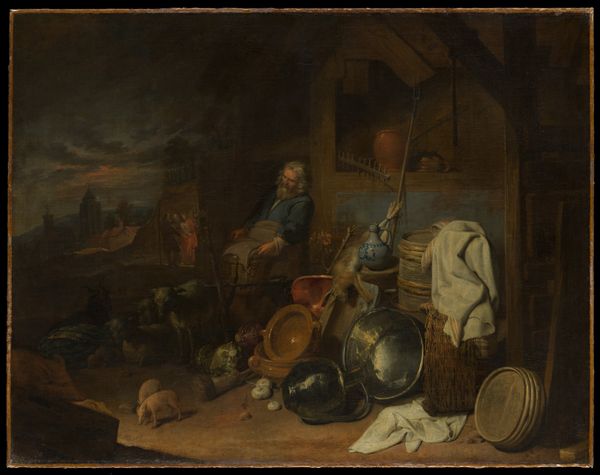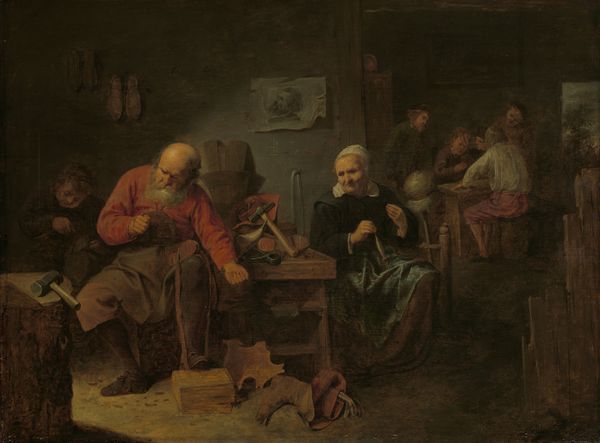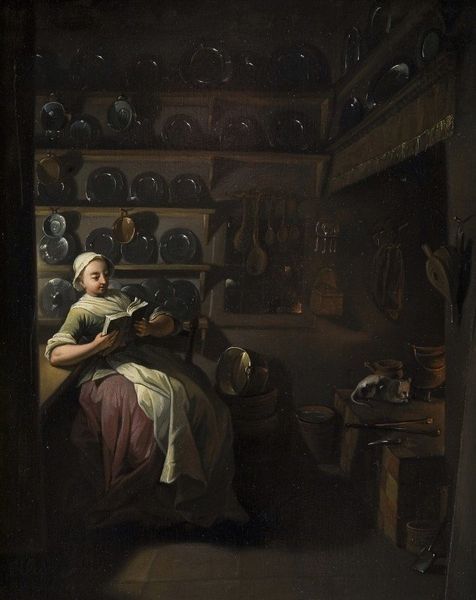
painting, oil-paint, paper
#
gouache
#
narrative-art
#
baroque
#
painting
#
oil-paint
#
landscape
#
figuration
#
paper
#
oil painting
#
watercolour illustration
#
genre-painting
#
realism
Copyright: Public Domain
Curator: Just looking at Wilhelm Kalb's "Horses on the field" here at the Städel, the immediate feeling I get is one of quiet domesticity. It’s…grounded, almost heavy with the weight of everyday life. Editor: You know, it’s interesting that you say that. While ostensibly titled "Horses on the field", what grabs me about this work isn't the equestrian element, which appears quite minor in the overall composition, but rather the snapshot it provides into, as you said, the everyday of 17th-century domestic life, right? What the painting tells us is less about pastoral beauty, but how deeply entrenched were paintings of this time, of almost reportage from this moment. It becomes social history, almost. Curator: Yes! The horses in the title— almost an aside, the scene it truly seems interested in presenting the bustle, work, chaos, joy, maybe exhaustion – of home life at the time. All framed in that intense baroque light… What material realities for this kind of thing. Editor: Right. Note how the artist utilizes oil paint to really amplify a palpable, dense, even dark vision. I want you to consider the political context in which art gets acquired, the politics of an artwork even surviving! The politics in fact in even acquiring paint. You note how this moment feels heavy; but that might equally describe a whole art ecosystem propping up the need and capacity to simply get painting! Curator: That interplay of light and shadow isn't just decorative either, is it? See how the light seems to fall upon certain figures – those figures tending the home, preparing meals. In contrast we get only glints for the others in shadow. And just the light on all those vegetables in the foreground! – as if each item is pregnant with symbolism about sustenance and labor. All so carefully considered – not spontaneous. Or it at least conceals artfulness well. Editor: You know, Kalb's focus on genre scenes—scenes of everyday life—really grew during a time when Dutch art was diversifying to cater to the tastes of a burgeoning merchant class. While art was historically a way for upper class and royal folks to show off finery or class relations, this presents people simply engaging in the everyday… Even if elevated by craft, as we both pointed out. This tells me art could then operate on new registers than ones merely performative and demonstrative. Curator: Looking one more time, this isn’t just a scene but perhaps an ode or rumination of labor and light? You made me reconsider what I immediately saw. Editor: Well, likewise: reflecting how this reflects economic conditions gives me much pause too! Thank you!
Comments
No comments
Be the first to comment and join the conversation on the ultimate creative platform.
